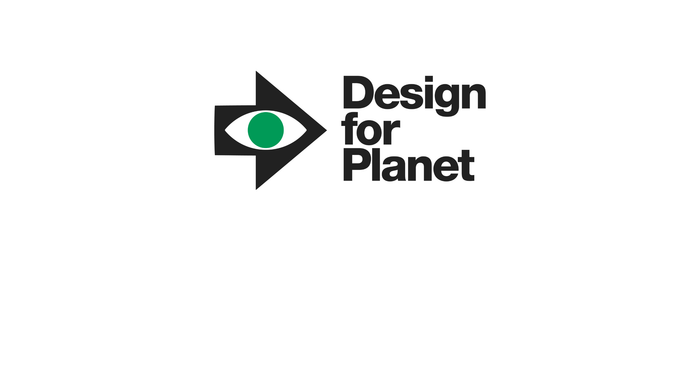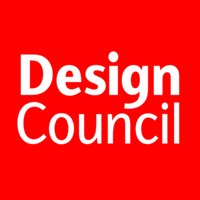(Article originally published by Design Council)
Globally experienced, award-winning and hugely creative, Jo Arscott has worked with and represented billion-dollar brands such as Coca-Cola and Proctor & Gamble across the UK, North America, Europe, and the Middle East. Her career to date has delivered inspiring and engaging pieces of work incorporating diverse, creative and strategic thinking.
Her most recent roles found her heading up accounts within MENA and Saatchi & Saatchi, where she managed teams that delivered integrated brand activation campaigns. She recently spoke at D@AD Festival 17, Dubai Lynx and Saint Martin's College of Art and Design, and is our first of 12 women interviewed for our Leading Women in Design series.
What does ‘design’ mean to you?
As an ad woman, I instinctually go to Graphic Design – and to some of the amazing people I’ve worked globally such as Sally Tambourgi at J. Walter Thompson Dubai, who is so precise and passionate her luxury brand designs/films look like modern versions of renaissance paintings. Or Troy Mack at Advantage in Fayetteville, Arkansas who pushes himself to the limits, strategically and structurally with hard-working FMCG retail solutions.
Why do you feel design is important?
Design is EVERYTHING. Your phone, the roads, your dress – It’s a never-ending education…in the 80’s, I remember admiring a beautiful vase in The Conran Shop then going upstairs to Bibendum and being astonished at the sight of my ‘Nouvelle Cuisine’. In the 90’s, walking through numerous V&A costume exhibitions and then jumping on Eurostar on a whim to wander through Versailles in a happy daze. In the 2000’s, standing under ‘The Bean’ in Chicago taking pics’ of a myriad of reflections and more recently living in Dubai, say no more. It’s the senses, emotion - invisibility and visibility. Without design, we are living in a black, empty, box. Well, there wouldn’t even be a box would there? Actually, or a colour called ‘Black’.
What do you feel design can achieve?
Anything and everything.
As we approach February 2018, which marks the 100th anniversary of the Representation of the People Act 1918, where some women over the age of 30 gained the right to vote for the first time what does this anniversary mean to you?
I am pretty sure that I wouldn’t be sat here talking to you at The Design Council in 2018 if that Act hadn’t passed 100 years ago. A Black British woman who can freely vote, who went to art college and who’s having a successful career in male-dominated industry since 1986, and who was Britain’s first black female Creative Director at 28 (1990), and was considered to stand as a Parliamentary candidate probably, definitely, wouldn’t have happened! It was a foundation. A foundation for freedom and diversity in so many ways. We owe Millicent Fawcett and the Suffragette movement so much.
Do you think there is genuine equality for men and women across the advertising industry today?
No. But like most businesses, the UK Ad industry is trying hard to rebalance, albeit in desperation. The voices of women and equality groups on social media have played a key part; it’s the new Protest Platform. When I first started as a creative in the late 80’s, I remember being one of a handful of women creatives and black creatives. But having returned to London after a decade working globally for IPG, Publicis and WPP, I’m shocked to see the activism happening today. I’m thinking, “Really? Are we still here in this place? How can I help? PLEASE let me help!”
What does equality mean to you?
I’ve lived and worked in the American South where I felt the legacy of slavery and the reality of the KKK. In Dubai where I was at the top of an infallible caste system but in contradiction being hindered by historic male dominance. I’ve created brand activation campaigns for Coca-Cola, P&G, Huawei to work around the intricacies of race and politics. My mind has been pained and educated. So in answer, ‘Equality’ is a basic human right for all. As simple as that. I WISH it were as simple as that.
What does diversity mean to you?
Being accepted for who you are regardless of Colour, Race, Age or Gender.
What does inclusion mean to you?
That’s so complicated depending on the society you are living or working in, especially when political, religious or financial elements are involved. It’s not always an easy solution no matter how much you would like it to be. But in advertising to be inclusive, you have to address these realities head-on – with an equal and diverse workforce. You can’t be superficial or ‘blinkered’ because it suits your bottom-line or hidden agenda. Look how that backfired for brands such has Dove, H&M, Cheerios and to some degree L’Oreal UK, although to be fair, L’Oreal is incredible in trying to change the game globally.
Do you think that real ‘talent’ is being hindered from coming into the advertising industry because of a need to fit a certain box, which includes a need to have a degree or formal qualification of some sort?
“Yes” and “No.” Of course, real talent is coming through the system, there’s amazing creative courses at Falmouth, Watford, The University of the Arts and UAL. However, fees are a huge barrier – what average British family can afford tens of thousands of pounds on one child’s education? The second barrier is simple awareness. Schools need to be teaching the bigger picture of creativity - the value, the possibilities of advertising and design. The third barrier is intrinsic cultural realities for certain British communities. We need to make the invisible, visible. Help them find their creative voices to the benefit themselves and the British economy.
What can we do to promote equality, diversity and inclusion in advertising?
Charity positions, “saving-face” positions and quota filling positions are not the answer. There’s a lot of that going on. To survive long-term in this industry a person’s talent (or diversity) alone is not enough. There has to be a natural fire and passion for what they do. We also have to remember that creative industries are not just London based. We need education at the grassroots level. Assisted funding. And “balls” to tell this generation straight, no holding hands. We also, of course, have to show diversity in our work -authentically. No more ‘colour collages’ of people.
What can we do to promote equality, diversity and inclusion in design?
No different to advertising. The industry needs to take a deep breath, take a step back and consider how they can authentic in all processes.
There have been high profile reports across the media recently of a gender pay gap across certain sectors and industries. Do you feel this is the case in advertising? And if so, what can we do to change that?
I have always believed it’s up to the individual to negotiate his or her own package. That’s part of the culture of advertising and the media. You could have two male designers, one on x the other on xxxx – as the latter has been savvier and knew how to play the industry ‘game’. I am in the latter camp as a woman. I’ve always believed you fight your own battle on this; you use your own political savvy and wits when it comes to salary negotiations. That is what I have been taught. This has been MY culture. But if the new generation is expecting the same for all, in some written pay scale…then that’s the way it is. That’s the way it is – now – and I have to respect that.
If you were to start all over again, what would you tell your younger self when you started considering your career pathway?
Don’t change a thing. Your instincts were right. I’ve learnt from every victory and every battle.
Who were your role models growing up?
As a teenager, I searched for role models of colour, but there weren’t any in British media. So I related to Boy George for his outspokenness, individual dress sense and not fitting into “acceptable” public camps. And Margaret Thatcher for being a h3 female lead in a male-dominated world. When I came into advertising, it was the “oddities” the immensely successfully individualists like Trevor Beattie, Graham Fink, Dave Droga.
You have achieved huge accolades in your career, however, has it been challenging to get where you are because of a male preconception of you as a person?
I never saw my colour. I always celebrated being a girl. I would wear gold evening dresses and pink feather boas to work daily. I was always accepted for ‘me’. I never felt or experienced or saw any boundaries. But the reverse of that is I had to deliver. Win awards. Had to be ‘great’. The biggest thing in my era is that I also sacrificed having a family. You couldn’t do both. A woman couldn’t be a Creative Director and look after a home. Be a female creative and be pregnant. It was a “men’s club”. I chose to be married to my job, which was right for me. It’s good to see, the changes for women in that aspect. They can get to the top and have a family/home.
Or has advertising got it right, and the industry promotes/recruits on talent and not the packaging the talent/gift arrives in?
In short, it is GOOD business to hire diversity. It is GOOD business to promote diversity. It is GOOD business to understand the COMPLEXITY of diversity. That is where the industry suffers. This is why I’m putting my hand up to agencies, clients and brands and saying, “Hey, contact me, let me help.” The ‘packaging’ doesn’t matter if what you unwrap is the right gift, not something someone has put in just to keep the peace.
If you could speak directly to ‘the next big thing’ in advertising, what you say to them to help them on their way to a successful career in advertising?
Be yourself. Follow your instincts. Understand the politics.
What does the future of creative industries look like to you?
Open. Fluid. Unrestrained.

